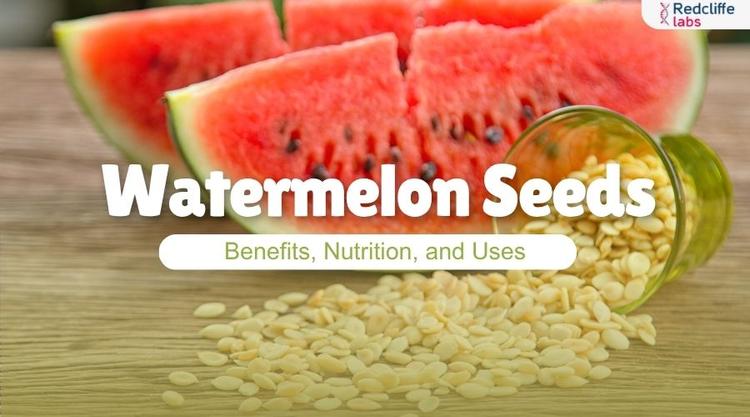Sitafal Fruit: Benefits, Side Effects, and More

Medically Reviewed By
Prof. Ashok Rattan
Written By Sheena Mehta
on Feb 14, 2025
Last Edit Made By Sheena Mehta
on Jul 19, 2025

Hey! Have you ever tasted a Sitafal fruit (custard apple)?
Also known as Annona Squamosa, Sitafal is a tropical fruit known for its sweet and creamy flesh. It is green in color, has a bumpy texture, and is loaded with vitamins, minerals, and antioxidants.
8 Interesting Facts about Sitafal Fruit
- Sitaphil fruit comes from the family of the Annonaceae.
- Mythologically, Sitaphil’s name is inspired by Mata Sita's. Mata Sita was once starving while accompanying Lord Ram during the 14-year exile. The fruit appeared immediately after he shot an arrow into the ground.
- The fruit is known as “custard apple” in English and “Sharifa” in Arabic regions.
- This fruit is culturally relevant, and traditional medicine practices use it for its anti-inflammatory and antimicrobial properties.
- The antioxidants present in Sitafal help keep many chronic ailments at bay.
- Eating Sitafal seeds in abundance can prove fatal. Ensure you remove them before eating the fruit.
- You may even see a 5-9 feet tall custard tree.
- Other names for Sitaphil fruit are Sugar Apple, buah nona, seri kaya, Sweetsop, Anona, nona, and Bullock's Heart.
When it comes to the fascinating aspects of Sitafal, more is less. Would you like to know more about the fruit, such as nutritional value, benefits, and recipes? Stay with us until the end.
Nutritional Value of Sitafal Fruit
As hinted above, the Sitalfil fruit, commonly known as the custard apple (Annona squamosa), is far more than a tasty snack. It is a nutrient-dense snack with essential vitamins, minerals, and other beneficial compounds.
The nutritional composition of the custard apple varies due to its ripeness, cultivation practices, and geographic location. Below is a breakdown of the nutritional value of Sitaphal fruit (100 gm). Let’s explore it in detail.
Approximate Nutritional Composition: Sitafal (100 mg)
| Calories | 90-100 kcal |
| Carbohydrates 1. Sugars 2. Dietary Fiber 3. Protein 4. Fat | 22-24 g |
| |
| Vitamins C | Approx 15-20 mg |
| Minerals | |
| Potassium | approx. 240-250 g |
| Calcium | Around 20-30 mg |
| Magnesium | Around 20-25 mg |
| Iron | About 0.5 -0.8 mg |
Additionally, other beneficial compounds present in Sitafal are antioxidants and phytochemicals. Thus, enjoy it as a part of your balanced diet to reap all its full health benefits.
Before we delve into the benefits of Sitafal fruit, let’s look at its properties.
Properties of Custard Apple
The properties of the Sitaphil fruit are divided into the following categories:
- Physical and sensory properties
- Nutritional properties
- Health-related properties
- Cultivation and agriculture properties
| Physical and Sensory Properties | Nutritional properties | Medicinal and Health-related properties | Cultivation and agriculture properties |
| 1. Sitafal fruit has a green, bumpy outer skin that safeguards its pulp. | 1. Sitaphil serves as an energy-boosting snack. | 1. The consumption of Sitaphil supports digestion and may prevent constipation. | 1. Sitaphil fruit can be grown in home gardens. Also, it is used in local diets and traditional medicine. |
| 2. The pulp of Sitaphil is custard-like in texture. It is sweet, aromatic, and has a smooth consistency. | 2. 2. The fruit’s micronutrients include carbohydrates, proteins, fats, vitamins, antioxidants, and phytochemicals. It does everything from improving digestion, being low in fats, supporting immune health, providing energy metabolism, contributing to bone health, and combating oxidative stress. | 2. Custard tree’s low sodium levels help maintain a healthy heart and blood pressure. | 2. A custard tree thrives in tropical and subtropical climates. |
Top 7 Benefits of Sitafal Fruit
Knowing about the health benefits of Sitafal fruit may be the most awaited part of the blog. So, without the wait, let’s explore custard apple health benefits; adding this luscious fruit to the diet can improve your health and overall well-being.
1. Contains skin-enriching elements
Sitafal fruit can help treat skin infections. Loaded with vitamin B5, vitamin C, vitamin A, zinc, and copper, these elements work together to effectively heal acne, allergies, and other skin problems.
Also read: https://redcliffelabs.com/myhealth/diet-plan/7-day-indian-diet-plan-for-glowing-skin/
Additionally, the fruit contains hydrating properties and natural oils that make skin more supple, moisturize it, and reduce dryness.
2. Keeps blood sugar under control
Amazingly, Sitaphil fruit is sweet, but its low glycemic index helps release sugars slowly into the bloodstream, which benefits people with diabetes.
Moreover, the fiber content in custard apples helps slow down glucose absorption, thus managing blood sugar levels.
6 Helping tips to keep blood sugar in control
Here are some helpful tips to keep blood sugar under control.
- Monitor your blood sugar level.
- Don’t skip meals; eat your meals at fixed times.
- Choose foods lower in calories, such as berries, leafy greens, and whole fruits.
- Drink plenty of water.
- Avoid sugary drinks, such as juice or soda.
- Physical activity is a must.
3. Essential for bone health
Custard apple contains phosphorus and vitamin K, which provide protection to bones from osteoporosis, becoming weak, and reduce the loss of bone density.
Additionally, the custard apple contains a good amount of calcium, which helps maintain bone strength and density. Magnesium aids in calcium absorption and bone mineralization. Nonetheless, the anti-inflammatory properties of Sitafal fruit can help protect bones from oxidative stress and inflammation-related damage.
4. Helps improve your digestion
Custard apple, or Sitaphal fruit, is rich in dietary fiber, which aids in smooth digestion. It encourages regular bowel movements and prevents constipation. Besides, the fiber content also helps regulate the digestive tract, ensuring the food moves efficiently through the digestive system. The vast reserves of dietary fiber prevent unnecessary cravings and give you a feeling of fullness.
A custard apple also contains enzymes such as amylase that help absorb nutrients and thus relieve bloating and indigestion.
5. Aids Wound Healing
Eating Sitafal fruit can help heal wounds faster due to its rich vitamin C and manganese content. Vitamin C also helps reduce inflammation and strengthen the immune system.
Additionally, the anti-inflammatory properties of Sitafal fruit can help reduce swelling and encourage quick recovery from wounds or injuries. The fruit's antioxidants help combat oxidative stress and promote the regeneration of damaged tissues.
6. Contains Hepatoprotective Properties
Custard apple contains hepatoprotective properties, which help protect the liver against chronic liver injury and liver inflammation and support the reduction of bilirubin levels.
The fruit also has detoxifying properties, helping the liver to filter toxins from the blood. Eating Sitaphil fruit daily may help the liver eliminate toxins more efficiently.
7. Improves Eye Health
Custard eye is also beneficial for eye health due to the presence of vitamin C, and vitamin A. Vitamin C is present in abundance, which is crucial for the health of the eye's blood vessels and prevents damage to delicate eye tissues.
On the other hand, vitamin A is important for maintaining healthy vision and producing rhodopsin that enables low light and color vision.
6 Helping Tips to Improve Eye Health
Here are some helpful tips to protect your eye health:
- Eat a nutrient-rich diet.
- Practice the 20-20-20 rule.
- Wear sunglasses to protect your eyes from the UV rays.
- Regular eye screenings are a must.
- Maintain a healthy weight.
- Stay hydrated.
Also read: https://redcliffelabs.com/myhealth/general-health/dry-eyes-causes-symptoms-prevention-and-treatment/
Are there any side effects to eating Sitafal fruit?
Consuming Sitarfil fruit is generally safe. Too much consumption increases the chances of experiencing side effects:
- Allergic reactions: Itching, swelling, or rashes may occur due to eating Sitafal fruit in excess.
- Elevated blood sugar levels: The fruit is naturally high in sugar content, which can affect your blood sugar levels if you have diabetes:
- Digestive problems: Eating Sitafal fruit in large quantities may also cause digestive issues, as well as vitamins, such as gas, bloating, or diarrhea.
- Weight gain: Consuming a custard apple, which is high in calories, can lead to weight gain. If you are watching your calorie intake, keep portion sizes in control.
- Interaction with medicine: Sitafal fruit may interfere with medicines such as those for diabetes and thus can affect blood sugar levels.
- Pregnancy and breast-feeding: If you are pregnant or breastfeeding, excessive consumption of Sitafal fruit can prove fatal.
Always consult your healthcare provider about how much Sitaphal fruit you should consume daily to obtain maximum benefits.
How to eat Sitafal Fruit?
Step-by-step instructions to eat Sitafal fruit:
- Select a ripe Sitafal fruit.
- Wash it under cold running water.
- Cut the fruit.
- Scoop out the soft, creamy flesh covered by black seeds.
Now, once you have scooped out the flesh, you can eat the pulp as it is, which has a creamy texture. It is sweet.
3 Sitaphil Recipes
Interesting Sitaphil recipes to try at home:
- Sitafal Smoothies: Combine Sitafal pulp with milk, yogurt, or bananas.
- Add to dishes for extra flavor: Incorporate Sitaphil fruit into berries, ice creams, or even sauces.
- Sitafal Juice: Blend the Sitafal’s pulp with coconut or water. Strain it. Your refreshing Sitaphil juice is ready.
Frequently Asked Questions (FAQs)
1. Is it safe to eat Sitafal fruit daily?
Yes, it is generally safe to eat Sitafal fruit daily. It is a powerhouse of essential vitamins and minerals, such as iron, potassium, magnesium, copper, and vitamins C, A, and B6, which boost health.
2. Can I eat Sitaphil fruit for the cold and cough?
Eating Sitafal fruit can help you deal with cold and cough, but it is not a cure. The fruit contains vitamin C, which strengthens the immune system and allows your body to combat infections.



